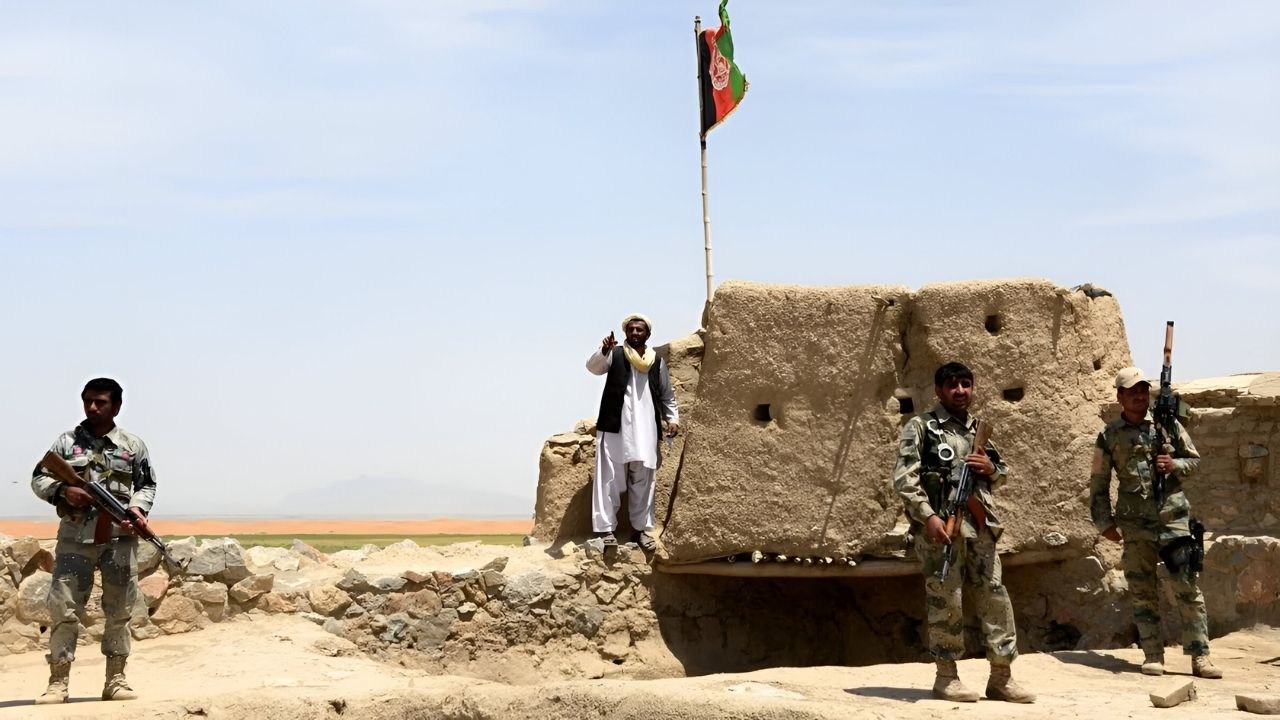
Why do Afghanistan–Pakistan border skirmishes happen? The Afghanistan–Pakistan border, known as the Durand Line, has been a hotspot for conflict for decades. Border skirmishes often arise due to disputes over the exact demarcation of the boundary, which was drawn by the British in 1893. Ethnic tensions also play a significant role, as the Pashtun tribes straddle both sides of the border and have strong cultural ties. Additionally, militant groups operating in the region exploit the porous border to launch attacks, further escalating tensions. Both countries accuse each other of harboring terrorists, leading to frequent clashes. Economic interests and control over resources add another layer of complexity to this volatile situation.
Key Takeaways:
- The Afghanistan-Pakistan border skirmishes have a long history rooted in territorial disputes, geopolitical tensions, and military confrontations, impacting the lives of civilians and creating complex cultural and social dynamics.
- Despite diplomatic efforts, the future of the border skirmishes remains uncertain, especially with the withdrawal of U.S. troops from Afghanistan in 2021, potentially leading to increased instability along the border.
Historical Context
Understanding the Afghanistan–Pakistan border skirmishes requires a look into the historical backdrop. These conflicts have deep roots in the region's history, politics, and geography.
- The Durand Line, established in 1893, marks the border between Afghanistan and Pakistan. This line was drawn by the British and has been a source of contention ever since.
- Afghanistan has never officially recognized the Durand Line as the international border, leading to ongoing disputes.
- The border spans approximately 2,670 kilometers (1,660 miles), making it one of the most porous and difficult-to-control borders in the world.
- Tribal regions along the border, such as the Federally Administered Tribal Areas (FATA) in Pakistan, have historically resisted central control, adding to the complexity.
Geopolitical Tensions
The skirmishes are not just about territorial disputes but also involve broader geopolitical dynamics.
- Both countries accuse each other of harboring militants who launch cross-border attacks.
- The rise of the Taliban in Afghanistan has further strained relations, with Pakistan being accused of supporting the group.
- The United States' involvement in the region, particularly after 9/11, has added another layer of complexity to the skirmishes.
- NATO forces have also been involved in border incidents, sometimes leading to diplomatic tensions between Pakistan and Western countries.
Military Engagements
Military confrontations between Afghanistan and Pakistan have been frequent and often deadly.
- In 2011, a NATO airstrike killed 24 Pakistani soldiers at a border post, leading to a severe diplomatic crisis.
- Border skirmishes often involve artillery shelling, small arms fire, and sometimes aerial attacks.
- Both countries have established numerous military outposts along the border, increasing the likelihood of clashes.
- In 2017, a major skirmish occurred in the Chaman area, resulting in casualties on both sides and displacement of civilians.
Human Impact
The human cost of these skirmishes is significant, affecting thousands of lives.
- Civilians living near the border often bear the brunt of the violence, facing displacement and loss of life.
- Refugee camps along the border are overcrowded and under-resourced, leading to dire living conditions.
- Cross-border trade, which many local communities rely on, is frequently disrupted by the skirmishes.
- Education and healthcare services in border areas are severely impacted, with schools and clinics often being targets of attacks.
Diplomatic Efforts
Despite the ongoing conflict, there have been numerous attempts at diplomacy to resolve the issues.
- Various peace talks have been held over the years, but none have resulted in a lasting solution.
- The United Nations has occasionally intervened, urging both countries to resolve their differences peacefully.
- Bilateral commissions have been set up to address border management and security, though their effectiveness is debatable.
- Confidence-building measures, such as joint border patrols, have been proposed but rarely implemented.
Cultural and Social Dimensions
The border skirmishes also have cultural and social implications that are often overlooked.
- The Pashtun tribes straddle both sides of the border, sharing a common culture and language, complicating national loyalties.
- Traditional tribal codes, such as Pashtunwali, play a significant role in how conflicts are managed and resolved locally.
- Media coverage of the skirmishes varies greatly between the two countries, often fueling nationalist sentiments.
- Social media has become a new battleground, with both sides using it to spread propaganda and rally support.
Future Prospects
Looking ahead, the future of the Afghanistan–Pakistan border skirmishes remains uncertain.
- The withdrawal of U.S. troops from Afghanistan in 2021 has created a power vacuum, potentially leading to increased instability along the border.
Final Thoughts on Afghanistan–Pakistan Border Skirmishes
Afghanistan–Pakistan border skirmishes have deep historical roots and complex geopolitical implications. These conflicts often stem from territorial disputes, ethnic tensions, and political instability. Understanding the Durand Line's significance and the Pashtun tribes' role helps grasp the ongoing strife. Both nations have faced significant challenges in maintaining peace, with frequent clashes affecting civilians and military personnel alike.
Efforts to mediate and resolve these disputes have seen limited success, highlighting the need for sustained diplomatic engagement. Regional stability hinges on cooperation and mutual understanding. Awareness of these facts can foster informed discussions and promote peace-building initiatives. The skirmishes underscore the importance of addressing underlying issues to achieve lasting harmony.
Frequently Asked Questions
Was this page helpful?
Our commitment to delivering trustworthy and engaging content is at the heart of what we do. Each fact on our site is contributed by real users like you, bringing a wealth of diverse insights and information. To ensure the highest standards of accuracy and reliability, our dedicated editors meticulously review each submission. This process guarantees that the facts we share are not only fascinating but also credible. Trust in our commitment to quality and authenticity as you explore and learn with us.
